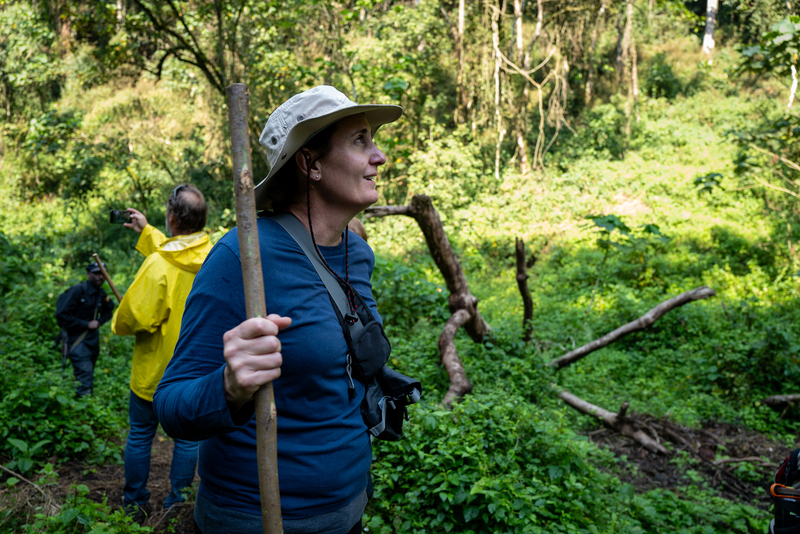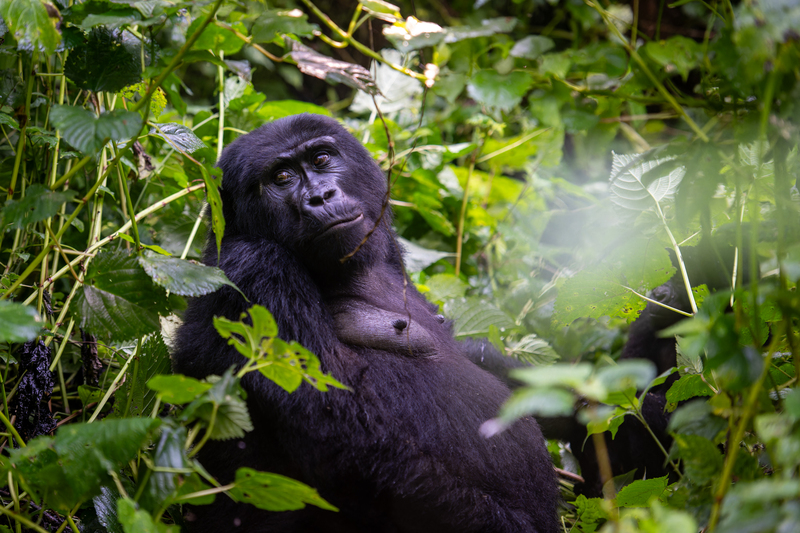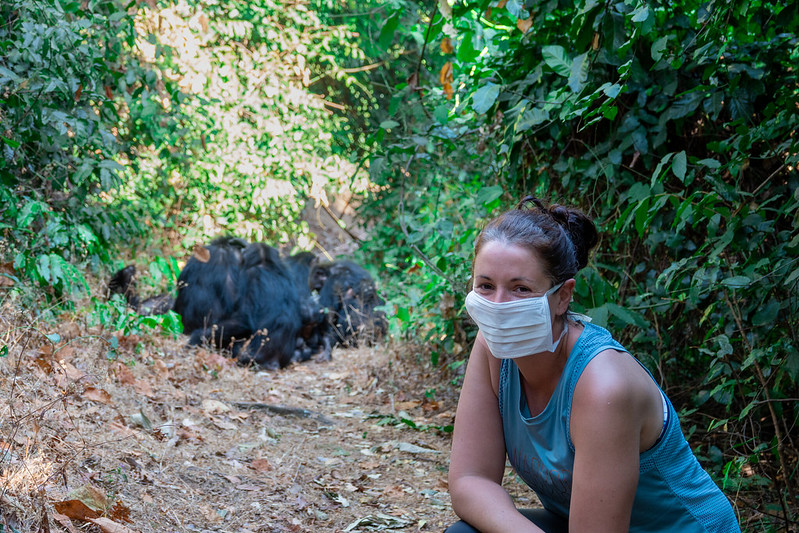It can be very hard to decide whether you would rather go and see the gorillas or the chimps in the wild. Both are life-changing experiences. When people ask us which experience is better, our answer is always the same - if you can afford to, do both! However, we know this isn’t possible for everyone due to budgetary and time constraints. That’s ok - whichever experience you choose, we at Adventure Out Loud are here to make sure you will have the time of your life.

When deciding whether you would prefer to go on a gorilla trek or a chimp trek, here are some factors you should consider:
Budget
Gorilla trekking is significantly more expensive than chimp trekking, so if you are on a budget, chimps is the way to go.
Here are the current permit prices (May 2024):
- Gorilla permit:
- Uganda: US$800/day
- Rwanda: US$1,500/day
- Chimp permit:
- Tanzania: US$150 (Gombe & Mahale)
- Uganda: US$50 (Kyambura) - US$250 (Kibale)/day
- Rwanda: US$150/day
All permits include 1 hour viewing and 2 - 6 hours hiking with the guidance of a park ranger.
Time between booking and departure
If you are booking last minute, you may not be able to get gorilla trekking permits. Gorilla trek permits sell out up to 12 months in advance in peak season (Jul - Sep). Chimp permits can also sell out, but it is less likely.
Experience
Gorillas have a bit more of a WOW factor than chimps and because they spend most of their time on the ground, it is more likely you will see them up close. On the other side, chimp families are larger so you are more likely to see multiple adolescent or baby chimps, and chimps are also more active, which can make for a very entertaining wildlife encounter. Here's a little more about each experience.
Gorillas
If you’re a fan of hiking, trekking to see the gorillas is something you’ll love. Gorilla hikes usually run for 2 - 6 hours, depending on how far away the gorillas are on any given day. Your guides have no control over the location of the gorillas in the park, so you’ll get to experience an off the beaten track hike that feels like a true adventure.
Gorillas are huge! They can weigh up to 200kg and measure up to 170cm on all fours! Seeing an animal so large and so closely related to humans in their natural habitat is an experience you’ll never forget. Seeing a gorilla community can be fascinating - sometimes, you will spot adorable baby gorillas swinging from trees, or you’ll see the community sitting and eating together.
Gorillas live most of their lives on the ground, so they can be easier to track than chimpanzees - you have approximately a 90% chance of finding them on your trek.

Picture shot by the amazingly talented Rob Cruse.
Chimpanzees
Hiking to see the chimpanzees usually takes 2 - 4 hours. It is a great adventurous hike to enjoy if you prefer a slightly shorter walk than the potentially long trek you may have to undertake to see the gorillas.
Chimpanzees are much more mobile than gorillas and can often be seen swinging from trees, chasing each other or interacting together in some other way. You may also see them using tools like sticks to gather ants and other food. Chimpanzee babies are more energetic than baby gorillas and are very entertaining to watch. You usually see more adolescent and babies on a chimp trek than you do on a gorilla trek.
Chimps live both on the ground and in trees, so even though there is a good chance of seeing them, they can sometimes be more difficult to find than gorillas. If it is possible for you, we recommend buying two permits, which will allow you two days of chimpanzee trekking, doubling your chance of seeing the chimps.
If you’re planning a more last-minute trip, chimp trekking might be a better option than a gorilla trek. Smaller crowds of chimp trekkers make it easier to buy permits, so you don’t have to book as far in advance as you would for a gorilla trek.
Overall, chimps are much more engaging and active than gorillas and if we had to choose, we would consider chimpanzee trekking a better experience than gorillas. However, when you consider the fact that there are only 1,000 gorillas left in the wild, gorilla trekking is a once in a lifetime experience, so it is really hard to decide.

Best time of year to trek with gorillas or chimps
The best time of year for both chimpanzee and gorilla trekking is January - February or June - October.
Time required for a gorilla or chimp trek
Gorilla and chimp treks both require a similar time frame - approximately two to five days. Single day experiences are not available because of the remoteness of the parks gorillas and chimps live in.
It is also important not to rush your experience. You want time to experience the other attractions in the area, things like golden monkeys, white water rafting, safari, and much more. For ideas on what other activities to add to your gorilla or chimp trek, read our blog things to do before or after your gorilla or chimp trek.
If your budget allows, we also recommend purchasing two permits as it is rare, but possible, that you won’t see gorillas or chimps the first time you trek. In particular, chimps can be harder to spot, and given trekking with chimps is cheaper, we recommend purchasing two chimp permits to increase your chance of a sighting.
Now that you’ve decided what kind of trek you would like to do, use our handy guide How to plan your gorilla or chimp trek for some handy hints on how to make the most of your trip. Take a look at our blogs Best places to see gorillas in the wild and Best places to see chimps in the wild to decide which country you would like to do your trek in. Or visit our Ultimate Guide to Trekking with Gorillas and Chimps for everything you need to know to plan your gorilla or chimp trek.
Upcoming gorilla and chimp itinerary ideas